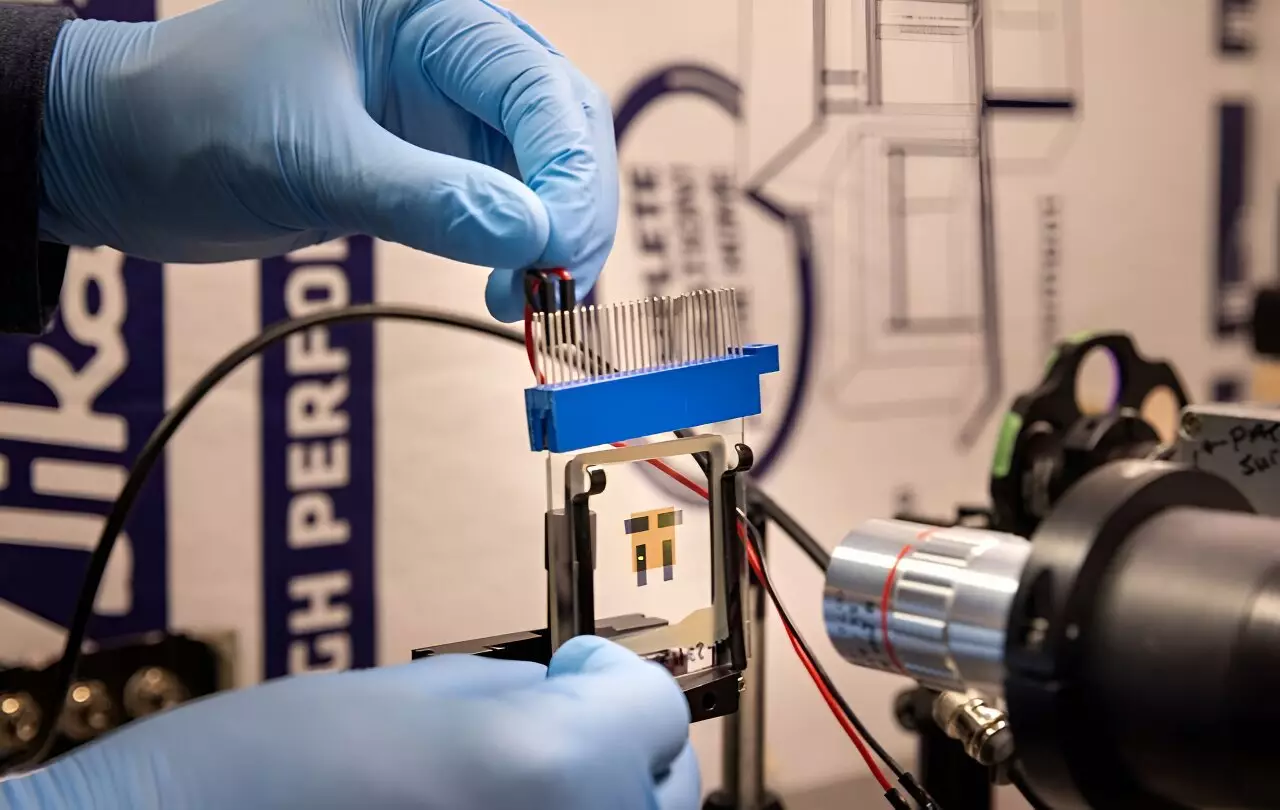In recent years, advancements in technology have consistently pushed the boundaries of what is possible in various fields. One area where innovation is making substantial strides is night vision technology, which has traditionally relied on bulky and expensive devices, such as night vision goggles. A groundbreaking development from researchers at the University of Michigan promises to transform the landscape of night vision equipment with a new type of organic light-emitting diode (OLED). This innovation not only promises to reduce the weight and cost of night vision devices but also introduces enhanced capabilities by integrating memory functionalities into the system.
The presence of conventional night vision systems, characterized by their complex mechanisms and substantial weight, poses significant limitations for users. Such systems typically use image intensifiers, which convert near-infrared light into visible light, but they do so through cumbersome processes involving fragile components and high-voltage operations. The new OLED technology, however, presents a solution to these challenges.
By introducing a device that operates with a thin film stack—about a micron thick, significantly less than the thickness of human hair—this innovation is not only lightweight but also portable. The reduction in weight and size ensures that users, such as military personnel or outdoor enthusiasts, can utilize night vision capabilities without the burden of cumbersome equipment. This breakthrough is especially relevant for prolonged use, wherein traditional goggles could cause discomfort and fatigue to wearers.
A remarkable feature of the newly developed OLED device is its ability to amplify near-infrared light into visible light with a gain of over 100 times, in stark contrast to the amplification of up to 10,000 times achieved by traditional systems. Chris Giebink, a professor involved in the research, emphasizes the potential for further amplification through optimizations, suggesting that this technology could evolve to surpass existing benchmarks.
The device achieves this amplification effectively by integrating a photon-absorbing layer with an array of OLEDs. The initial conversion of infrared light into electrons leads to a chain reaction, whereby electrons stimulate the emission of multiple photons. This positive feedback mechanism dramatically enhances the overall output, translating to brighter and clearer images in low-light conditions. The potential for such amplification not only makes the technology practical but also opens doors for more extensive applications.
Another notable advantage of this OLED technology is its operation at a markedly lower voltage than traditional image intensifiers. This characteristic hints at substantial benefits in terms of battery consumption, which is crucial for extended deployment in various applications. Users can expect longer battery life, thereby enhancing the usability of night vision devices in scenarios where recharging or replacing batteries may not be feasible.
In a world increasingly focused on energy efficiency and sustainability, this characteristic positions the new OLED technology as a modern solution aligned with these values. The thorough exploration of energy consumption is a pivotal aspect in advancing any technology, and this development showcases practical steps toward addressing these concerns.
Perhaps the most intriguing feature of this OLED innovation is its memory capability, termed hysteresis. This aspect allows the device to maintain light output based on prior input patterns, akin to how the human visual system processes information. Although this may introduce complexities in applications like night vision, it simultaneously offers avenues for development in computer vision systems.
The ability to remember past light inputs could lead to an evolution in how devices interpret and classify images. By mimicking the processing attributes of biological neurons—deciding whether to pass on signals—this OLED technology represents a potential leap toward smarter visual systems, effectively integrating perception and processing mechanisms.
The feasibility of mass-produced OLED technology is another aspect worthy of consideration. Researchers have emphasized that the processes employed to manufacture the new devices utilize familiar and widely recognized materials and methods. This familiarity not only allows for cost-effective production but also hints at a scalable future for this technology.
As industries continue to seek efficient, intelligent solutions to complex challenges, the potential applications of this novel OLED technology extend beyond military use. It opens opportunities in consumer electronics, surveillance systems, and even in sectors like healthcare, where enhanced vision capabilities are crucial.
The introduction of this advanced OLED technology heralds a new era for night vision and beyond. With its lightweight design, enhanced light amplification, energy efficiency, memory features, and practical manufacturing processes, it addresses existing limitations while paving the way for future innovations. As researchers continue to refine and advance this technology, the implications for various fields are significant, potentially redefining how we perceive and interact with our environments in low-light settings.


Leave a Reply